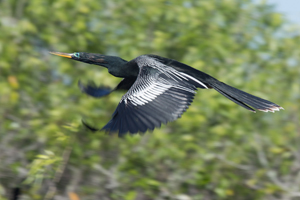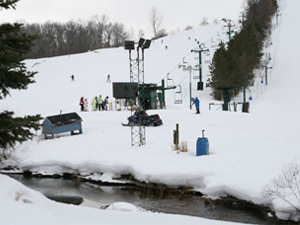Online Magazine
Recent Posts
- Safeguard your Cellphone Photos
- Black & White to Color – Instantly
- Wearing Many Hats
- Video Roundup
- Rescuing Your Blurry Pictures
- Showing Their Age
- What is Your Angle?
- Panorama Photos
- Humorous Photos
- Close Ups
- Fisheye Pictures
- Photo Antiquities
- Printing Big
- Appreciating Scale
- Celebrity Sightings
Tags
More Places to Go
- Free "How-To" Books “How To” books for popular cameras 0
- Vist Us on Facebook keep in touch with us on Facebook 2
Archives
- July 2023 (1)
- March 2023 (2)
- February 2023 (1)
- December 2022 (1)
- October 2022 (1)
- September 2022 (8)
- August 2022 (9)
- July 2022 (1)
- June 2022 (1)
- June 2021 (1)
- May 2021 (1)
- March 2021 (5)
- February 2021 (4)
- January 2021 (2)
- April 2019 (1)
- March 2019 (1)
- February 2019 (1)
- October 2018 (2)
- April 2018 (1)
- March 2018 (4)
- February 2018 (1)
- November 2017 (1)
- August 2017 (1)
- June 2017 (1)
- April 2017 (1)
- March 2017 (5)
- February 2017 (2)
- January 2017 (1)
- October 2016 (1)
- September 2016 (1)
- August 2016 (1)
- July 2016 (1)
- May 2016 (1)
- April 2016 (1)
- March 2016 (2)
- February 2016 (1)
- January 2016 (2)
- December 2015 (1)
- November 2015 (1)
- October 2015 (3)
- April 2015 (1)
- March 2015 (5)
- February 2015 (1)
- January 2015 (4)
- December 2014 (2)
- November 2014 (5)
- October 2014 (2)
- September 2014 (1)
- August 2014 (2)
- July 2014 (1)
- May 2014 (1)
- April 2014 (5)
- March 2014 (5)
- December 2013 (2)
- November 2013 (18)
- October 2013 (1)
- September 2013 (1)
- August 2013 (1)
- July 2013 (1)
- June 2013 (3)
- May 2013 (1)
- April 2013 (2)
- March 2013 (1)
- February 2013 (1)
- January 2013 (1)
- December 2012 (1)
- November 2012 (2)
- October 2012 (2)
- September 2012 (5)
- August 2012 (2)
- July 2012 (1)
- June 2012 (1)
- May 2012 (1)
- April 2012 (4)
- March 2012 (1)
- February 2012 (1)
- January 2012 (3)
- December 2011 (1)
- November 2011 (3)
- October 2011 (1)
- September 2011 (2)
- August 2011 (2)
- June 2011 (3)
- May 2011 (4)
- April 2011 (8)
- March 2011 (8)
- February 2011 (10)
- January 2011 (6)
- December 2010 (11)
- November 2010 (14)
- October 2010 (6)
- September 2010 (12)
- August 2010 (2)
- July 2010 (4)
- June 2010 (3)
- May 2010 (1)
- April 2010 (1)
- March 2010 (2)
- February 2010 (1)
- January 2010 (1)
- December 2009 (1)
- November 2009 (2)
- October 2009 (2)
- September 2009 (1)
- August 2009 (3)
- July 2009 (2)
- June 2009 (1)
- May 2009 (2)
- April 2009 (1)
- March 2009 (2)
- February 2009 (1)
- January 2009 (3)
Do the Birds Know Something We Should Also Know?
22nd April 2013
Earth Day “it’s for the birds”… and us too
Today is Earth Day. I’m guessing that many of you haven’t a clue as to what it’s about. Maybe you can get a glint of Earth Day here.
| I recently completed writing what has become an annual article about Earth Day. Yesterday morning as I was having coffee and reading the Sunday NY Times, I was quite surprised that I didn’t find a single mention of Earth Day throughout the entire newspaper. But I did run across an interesting article that has a similar theme.
As a lover of the outdoors, I’m an avid participant in nature photography. Having spent more than five decades with camera-in-hand, I’ve collected my share of wildlife images. Along the way, I’ve found that the most challenging parts of this favorite activity is capturing the varying graceful, delicate or powerful movements of birds in flight. |
 |
Yes, I like birds but I don’t consider myself a bird-watcher. Yet according to Brian Kimberling[1], there are some 5.8 million bird-watchers in the US. I’m not sure where he derives this number but his mention of The Audubon Society most likely accounts for a good share of them.
Last December amid our holiday festivities, I recall hearing about the start of Audubon’s annual Christmas Bird Count. During a two week period, participants take a census of birds in their geographic area with a main goal of studying how bird populations have changed in time and space. After reading Kimberling’s article, I have a better understanding of what these studies are telling us about the environment of all the non-bird species, i.e. us humans.
According the Audubon Society’s report, there has been a noticeable change in bird migration in recent years. The report says: we were able to look at the winter distribution of 305 species to see if their winter range had shifted over the last 40 years. We discovered that 177 of these species showed a significant shift north and this northward shift was correlated with an increase in mean January temperatures in the contiguous 48 states of almost 5 degrees during that time. You can find more details on the Audubon’s website.
Five degrees in 40 years. This is a pretty large increase within the lifetime of many of us. Obviously it’s a big deal to the habits of the birds.
Shouldn’t we be concerned? What do you think? I’d like to hear from you.
Written by Arnie Lee
[1]”What Do Birders Know”, NY Times Sunday Review Section, April 21, 2013
Winter Care For Your Camera
27th November 2010
The cold weather of winter is now upon us here in the upper midwest, but that doesn’t mean there won’t be plenty of opportunities for wonderful photographs. What it does mean, however, is that you’ll need to take extra care of your camera when you’re out in the cold. This is true for both digital SLRs and point-and-shoots.
 Snow scenes require special care for your camera |
You can help your camera stay warm as possible by keeping it under your coat. This will not only help it keep warm but will also protect it from the elements. The same is true for an external flash unit if you’re using one.
Another precaution against the cold is to bring spare batteries with you when you go outside. The batteries in your camera are likely to lose power faster at lower temperatures even if you’re not using the camera. Therefore, carry at least one extra set of batteries in your coat pocket where your body heat will keep them warm. Then, if your camera or flash batteries begin to fail, you can insert warm fresh batteries.
Condensation may be a problem you’ll have when you come inside from the winter cold. You’ve probably seen condensation on a glass of icy lemonade on a hot summer day. Your camera, especially the lens, is affected the same way when you bring it inside from the cold. The moisture from the warm air inside condenses on the cold surfaces of not only the lens, which can become completely covered, but also on the camera.
You can prevent condensation by wrapping the camera in a plastic bag or newspaper until it slowly reaches room temperature. The moisture will settle on the outside of the newspaper or bag and not on the camera. An even better idea is to place the bag on the camera while you’re still outside before you bring the camera inside.
Don’t use the camera if you notice that condensation has occurred. Instead, remove batteries and memory card and leave the compartments open until everything dries out. Don’t use the camera or take it back out in the cold until the condensation has disappeared.
So by dressing appropriately and properly caring for your camera, you’ll be taking great photographs in the cold of winter.
 Dress appropriately and enjoy the fun of winter photography |
Written by Scott Slaughter
Portrait Tip #2
02nd September 2010
Portraits are one the most common type of photographs. We’d like to share some tips for taking better people pictures.
« Older Posts
